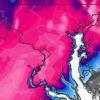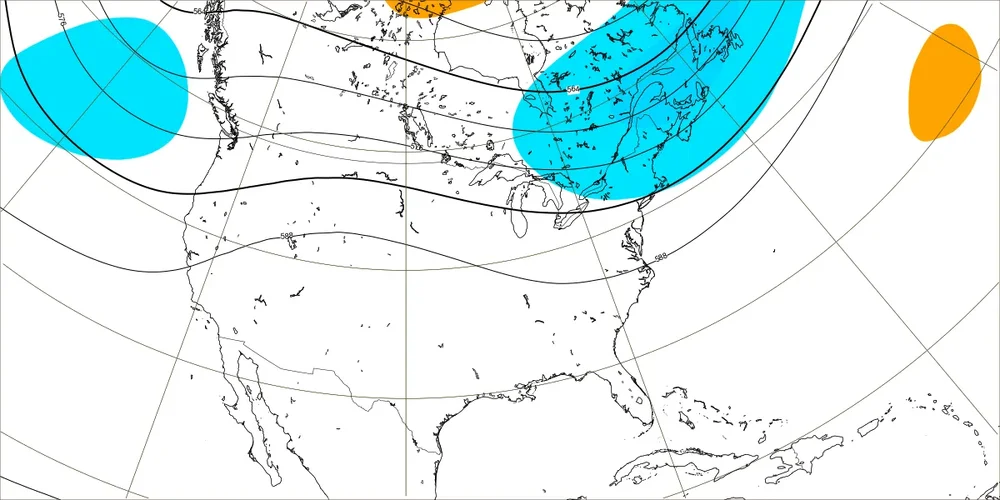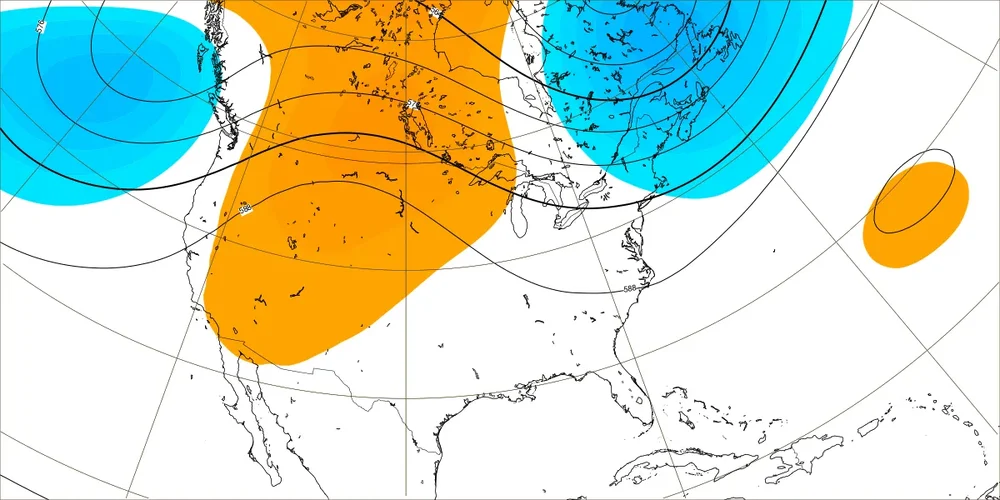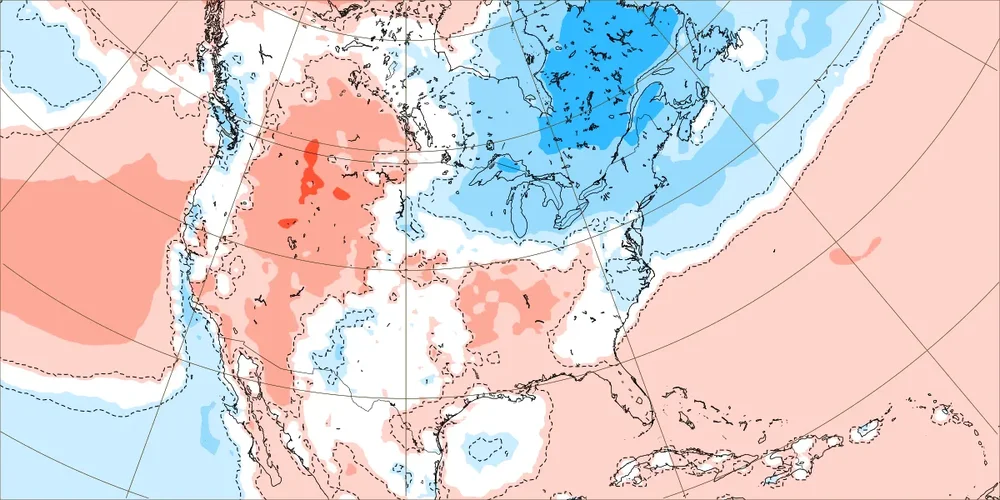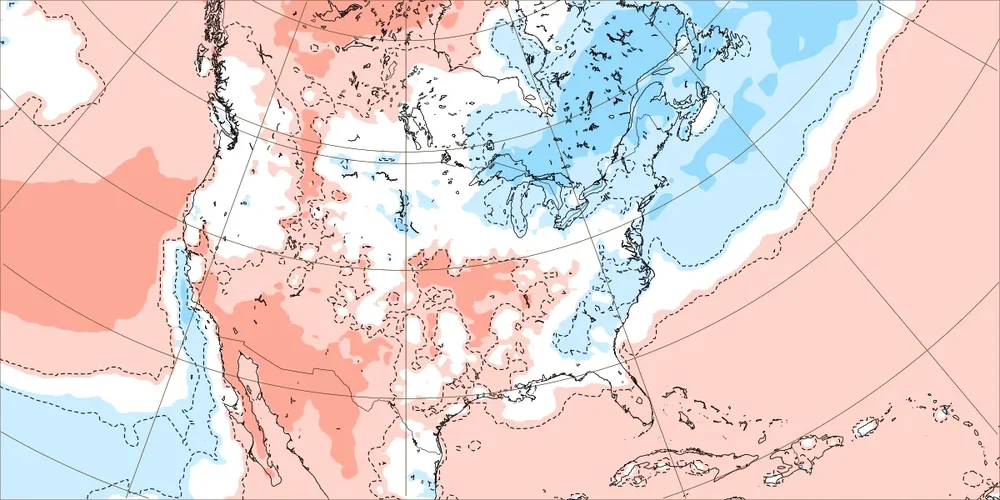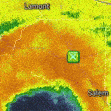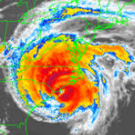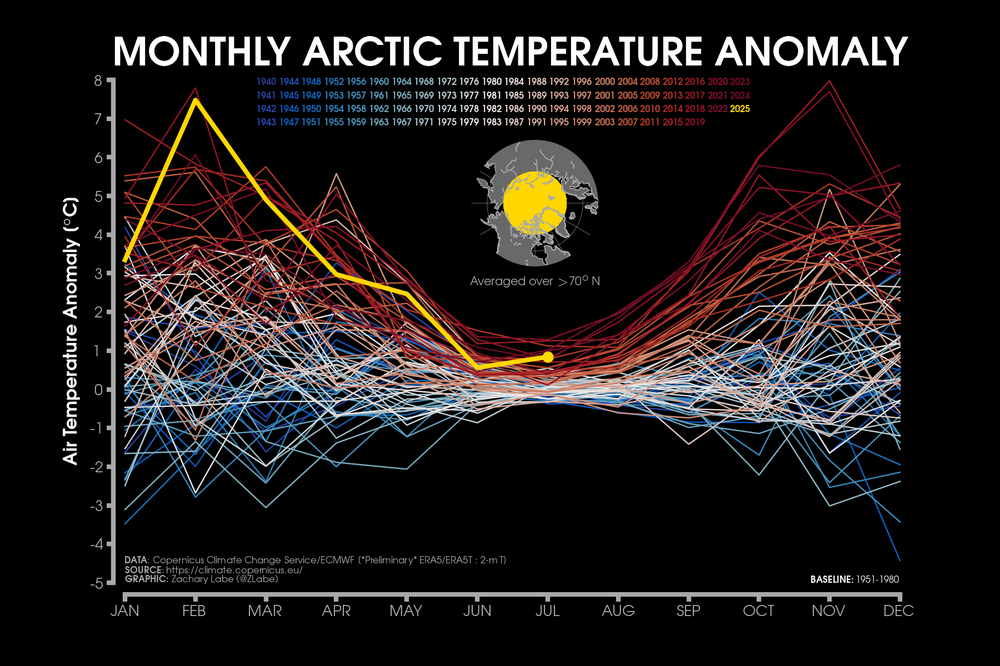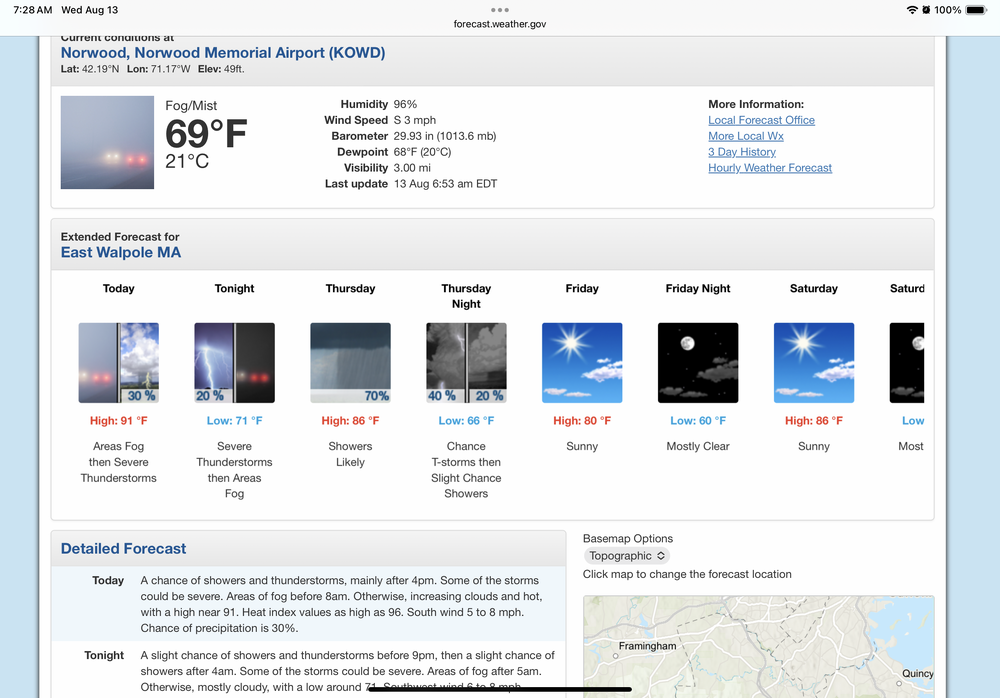All Activity
- Past hour
-
Yup. Clouds every morning has also been the theme this summer. Today we even get fog.
-
Have we had any temp reports above 1kft in Templeton, MA this week?
-
I got this from someone who receives updates from Lezak’s group: The latest model runs are narrowing in on a likely turn out to sea for Tropical Storm Erin. However, the European model suite continues to suggest a “too close for comfort” track near the Carolinas. Because of this, residents and interests along the Carolina coast and the broader East Coast should monitor Erin closely over the coming days. While an offshore track is currently favored, subtle shifts in the pattern could still bring impacts closer to shore. For those who are interested, he bases his forecasts on cycles. This paper describes the foundations of his approach.
-
Another heatwave this week. We take.
-
Agree concerning those land features. This was never much of a concern for the US IMHO.
-
Foggy start here in the valley
-
Definitely pedestrian at best for sne but man what a roaster up north!
-
Did this sub forum trade climates with Seattle?
-
Records: Highs: EWR: 102 (2005) NYC: 99 (2005) LGA: 100 (2005) JFK: 92 (2005) Lows: EWR: 55 (1950) NYC: 55 (1930) LGA: 56 (1979) JFK: 56 (1979) Historical: 1795: A major hurricane only ten days after a previous storm struck North Carolina and produced high winds as far inland as Winston-Salem. At Monticello, near Charlottesville, Thomas Jefferson noted that the loss of soil from the heavy rain thus far that month could be "modestly estimated at a year's rent." (David Ludlum)A "powerful torrent of rain" deluged Petersburg; creeks were at their highest point of the past 70 years.The second hurricane of the year caused flooding in the Virginia and North Carolina area contributing to a very wet summer. (Ref. for Hurricane of 1795) 1831 - The Great Barbados Hurricane was an intense Category 4 hurricane that left cataclysmic damage across the Caribbean and Louisiana in 1831. From August 11 through the 13, Bermudians were amazed to see the sun with a decidedly blue appearance, giving off an eerie blue light when it shone into rooms and other enclosed places. Ships at sea as far west as Cape Hatteras reported that "their white sails appeared a light blue colour." A month later it was learned that the astounding blue sunlight had coincided with a terrible hurricane that caused 1,477 people to lose their lives. It was assumed that the hurricane was intensive enough to cause an unusual disturbance in the higher atmospheric strata, and refraction, diffraction or absorption of light rays, to produce the blue reflection. Because the sun appeared bluish-green, Nat Turner took this as the final signal and began a slave rebellion a week later on August 21. 1913: Indianapolis, IN received 1.30 inches of rain in 15 minutes, 1.98 inches in 30 minutes and 2.68 inches in one hour. (Ref. Wilson Wx. History) 1919 - High winds and heavy rain struck the Middle Atlantic Coast Region. In New Jersey, winds gusted to 60 mph at Atlantic City, and nine inches of rain fell at Tuckerton. The wind and rain leveled crops and stripped trees of fruit causing several million dollars damage. (David Ludlum) 1935: A severe thunderstorm collapsed the roof of the B&O Hall of Transportation Building in Baltimore, MD which housed the most important collection of railroad models, pictures, exhibits and stock in the world. Many old, fragile locomotives like the Tom Thumb and Thomas Jefferson steam engines escape destruction when the largest locomotives lined up in the center of the building acted to hold up the collapsing roof. The collection would again be damaged by a collapsing roof in 2003 when the snowstorm dumped a record 28.2 inches of snow in four days, including 21.8 inches on February 16th. (Ref. Wilson Wx. History) 1953: At 10 p.m. on the 13th, Hurricane Barbara struck the North Carolina coast between Morehead City and Ocracoke. The storm then moved north and northeast, before going out to sea just south of Norfolk. Winds reached 63 mph with gusts to 76 mph at Norfolk. Winds at Cape Henry were sustained at 72 mph. (Ref. Hurricanes Late 20century - Hurricane Barbara) 1955: Hurricane Connie dumped 5 to 8 inches of rain on Southeastern Pennsylvania, ending a drought that had been plaguing the area. (Ref. AccWeather Weather History)Boston, Massachusetts area had 25 people killed by Hurricane Connie. (Ref. NOAA Boston Weather Events) 1977: Lightning strike near Indian point, NY triggered massive 24 hour power blackout in NY City. (Ref. Wilson Wx. History) 1978: Four inches of snow at fell at Salmon, ND. (Ref. AccWeather Weather History) 1980 - The afternoon high at New York City was just 89 degrees. But there were fifteen days of 90 degree heat during the month, their hottest August of record. (The Weather Channel) 1985 - Hail larger than golf balls, driven by 70 mph winds, moved down crops, stripped trees, and broke windows, near Logan KS. Road graders cleared three foot drifts of hail on Kansas Highway 9 east of Logan. (The Weather Channel) 1987 - Thunderstorms deluged the Central Gulf Coast States with torrential rains. Thunderstorms in Mississippi drenched Marion County with up to 15 inches of rain during the morning hours, with 12.2 inches reported at Columbia. Floodwaters swept cars away in the Lakeview subdivision of Columbia when the the Lakeview Dam broke. Flash flooding caused more than three million dollars damage in Marion County. (The National Weather Summary) (Storm Data) 1988 - A dozen cities in the northeastern U.S. reported record high temperatures for the date. Lansing MI reported a record 35 days of 90 degree weather for the year, Detroit MI reported a record 37 days of 90 degree heat for the year, and Williamsport PA reported a record 38 days of 90 degree weather for the year. (The National Weather Summary) 1989 - Thunderstorms developing in a tropical airmass over the northeastern U.S. soaked Connecticut and Massachusetts with four to eight inches of rain over the weekend, between the 11th and 13th of the month. Hartford CT received 7.70 inches of rain. (The National Weather Summary) (Storm Data) 1991 - Stockton, California received 0.05 inch of rainfall on this day. Since 1949, this is the only measured rainfall in Stockton on August 13th. 1995: Chicago, IL was in the midst of a four day heat wave where temperatures climbed into the middle 90s and lows were in the mid to upper 70s. The low temperature of 77° on this date tied for the record high minimum. Humidity was high and 27 deaths were attributed to the heat wave. The majority was in the Chicago area. (Ref. Wilson Wx. History) 2004: Hurricane Charley unexpectedly underwent rapid strengthening, jumping from a Category 2 to a powerful Category 4 storm in a few hours, while at the same time taking a sharp turn to the northeast. Charley made landfall as a Category 4 hurricane near Punta Gorda, Florida. Although the storm caused serious damage, much of this was limited to a narrow swath associated with the hurricane's eye wall. Charley was a very fast-moving, compact storm, and so much of its damage was attributed to high winds rather than heavy rain. Charley remained a hurricane across the entire Florida peninsula and passed through Orlando and near Daytona Beach. (Ref. More Information on Hurricane Charley) 2014 - An official, New York State 24 hour precipitation record was set at Islip, NY on August 12-13 when 13.57" of rain fell. 2014: In the New York City metro area early (Wednesday August 13, 2014) more than a foot of rain fell in just a few hours, causing extensive flooding on Long Island. As of 10 a.m. ET, Islip, New York had received 13.27 inches of rain, which set a state record for the heaviest 24-hour rainfall total in state history. This broke the previous record of 11.6 inches, set at Tannersville, New York in August of 2011 during Hurricane Irene. NY state record for the heaviest 24-hour rainfall(Ref.BY ANDREW FREEDMAN) Midwest and Mid-Atlantic Flooding: August 11-13. Five inches of rain in 24 hours inundated Detroit, Michigan, submerging cars up to their roofs, in one of the city's worst flooding episodes on record. Flooding also hit the Baltimore, Maryland, and Washington, D.C., areas, and Islip, Long Island, New York, measured 13.26 inches in 24 hours, setting a new state record. Economic costs exceeded $2 billion.Ref. (Weatherwise MAY-JUNE 2015, page 14)
-
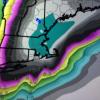
2025-2026 ENSO
40/70 Benchmark replied to 40/70 Benchmark's topic in Weather Forecasting and Discussion
I will confidnetly bet against the PDO returning to those levels during the upcoming cold season. -
The arctic has much lower variability in the summer as melting sea ice holds surface temperature near freezing. That gives Antarctica more influence over the global mean in N Hemi summer. Unfortunately there isn't a similar plot for antarctica.
-

2025-2026 ENSO
40/70 Benchmark replied to 40/70 Benchmark's topic in Weather Forecasting and Discussion
Everything that I am looking at says an extreme/ record PDO at this time of year is gong to elevate percipitously as we head into winter, which isn't a shock...one direction in which to go. Obviously it will be negative this winter. -
I mean statistically it's random. Could get one later this year or could be another 50 years. I'm not saying that it's the most likely scenario but it is within the range of possibilities. I asked AI to calculate the probability that there is no landfall between the years 1991 and 2075 and it said 2.6% likelihood or about 1 in 40 chance. Which is high enough to be a valid possibility, albeit not super likely. Odds of no landfall between 1991 and 2033 is 15% chance. This calculation is based off of a historical average of one landfall every 23 years.
-
73 / 72 clear. Clouds / showers, storms later, already storms/clouds into WPA - 6 - 8 hours away (1:30 - 3:30 arrival). Lingering clouds , scattered showers/storms overnight and another round tomorrow night, local spots to an inch or better. Otherwise, continued hot/humid with most getting to low 90s. We'll see if clouds spoil 90s today or tomorrow to continue this moderate heatwave. The weekend looks overall dry with Sunday the hotttest day low - mid 90s perhaps a few spots hotter. Erin approaches but safely hooks northeast out Mon-Wed. Trough into the northeast cools off to near/below normal from Tuesday through most of next week into next weekend. Beyond there warmer into the close of the month as heights rise into the east. 8./13 - 8/18 : Warm - Hot / humid. Peak heat Sunday into Monday, Rain Storms Wed/Thu. 8/19 - 8.25 : Cooler - near / below normal overall 8/26 - Beyond : Warmer and wet overall
-
Solar and mini-splits are the way to go, if you can. $14K back in rebates helps. Haven't paid CMP since installing in December and won't ever again. ROI in 5 years at this rate.
-
Toss.
-
Yup. Just call mosquito squad and soak everything in poison. Sad!
-
Weird to see severe in the point/click forecast given the forecast discussion and expected coverage:
-
More *
-
The best part of summeh is approaching as the coc expands and starts to dominate.
-
Hopefully a few towns can pick up a shower over the next 2 days.
- Today
-
Having hope on something that could still have a chance is one thing, but it's like you're a mama gorilla holding onto her deceased baby who's not coming back. Let it go... While you have some dignity for the love of God!

